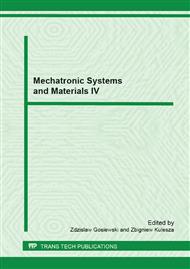p.132
p.138
p.144
p.153
p.159
p.165
p.171
p.176
p.182
A Stereovision System for Real Time Obstacle Avoidance by Unmanned Aerial Vehicle
Abstract:
The necessary hardware and stereovision obstacle avoidance algorithm used by UAV (unmanned aerial vehicles) are described in this paper. The algorithm bases on method of matching the areas of image by using the standard SAD (sum of absolute differences) as a measure of fit. The rapid machining of the image is done by compare the windows areas. Method didn't check individual pixels what is important feature. The application target is operating in unknown environment with the changing light conditions which may disturb the proper operation of the obstacle avoidance algorithm. To reduce the reflection effect the averaging filter for each frame image is applied. This is realized by compare of the average brightness values in successive video frames. It allows to control the factor of the achromatic color in the image. To increase the performance, in the anti-collision system the algorithm controls only the area being the center of the picture connected with the direction of the UAV flight. When the obstacle is detected the image is tested globally to find the direction of the avoidance maneuver. Onboard computer for anti-collision system uses a serial communication with the autopilot ArdupilotMega. A quadrocopter (multicopter that is propelled by four rotors) was chosen as a control object.
Info:
Periodical:
Pages:
159-164
Citation:
Online since:
March 2013
Authors:
Price:
Сopyright:
© 2013 Trans Tech Publications Ltd. All Rights Reserved
Share:
Citation:


